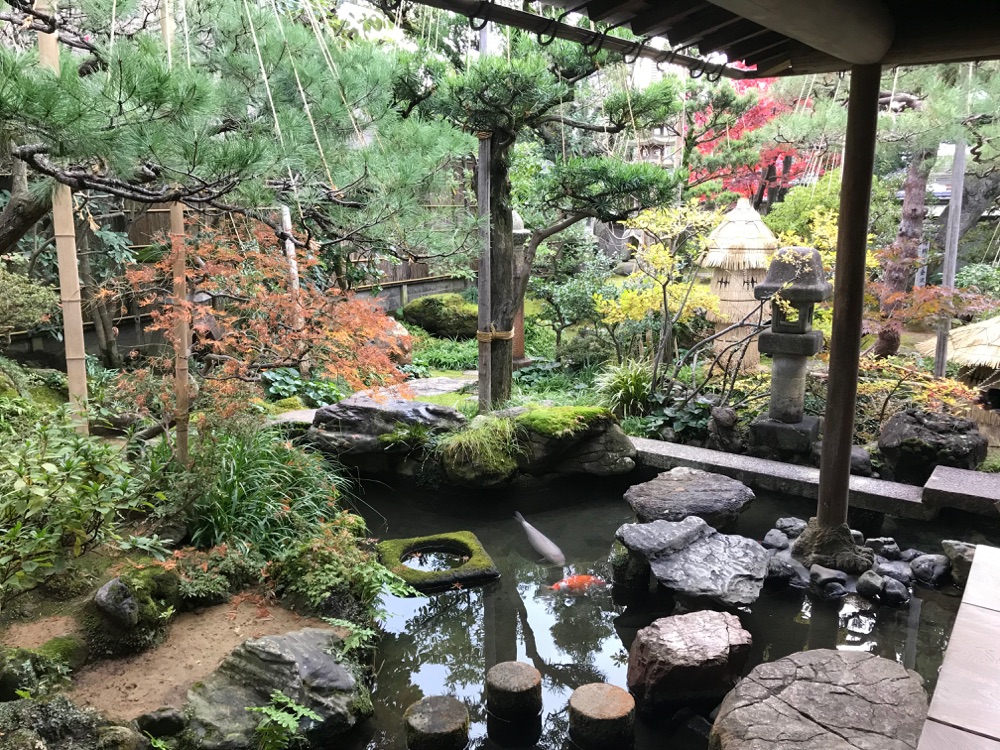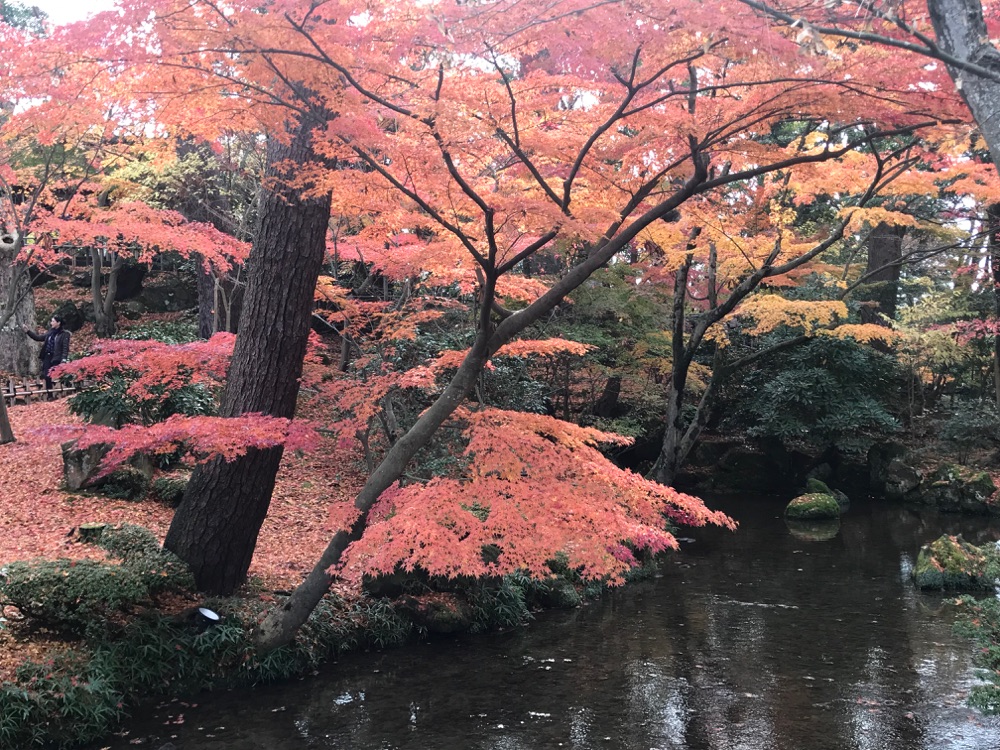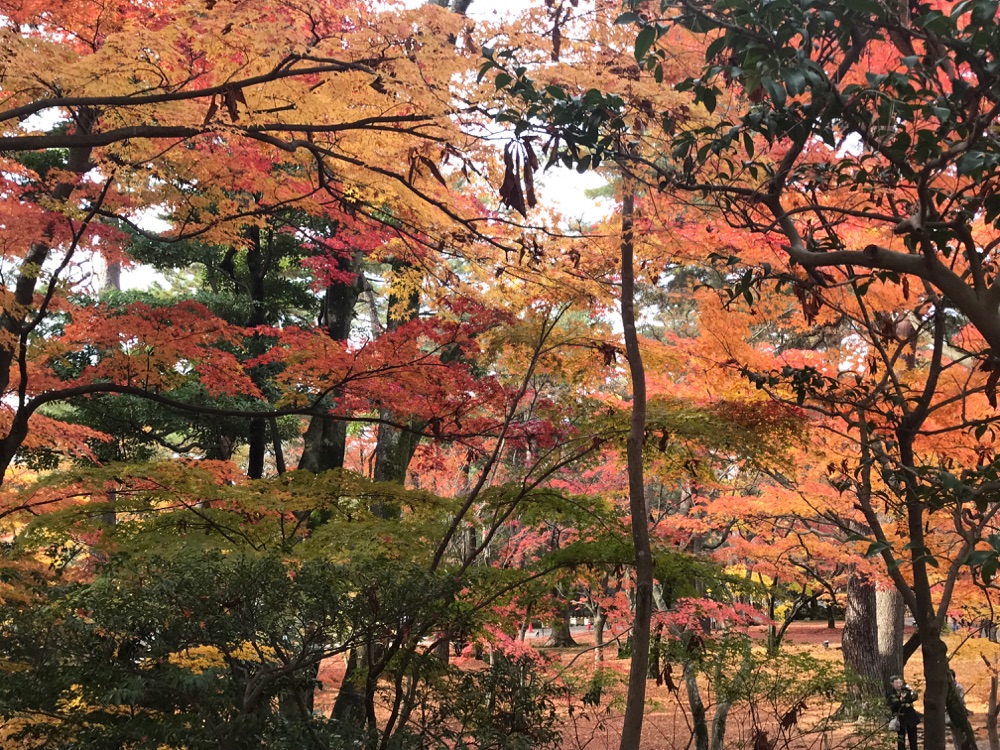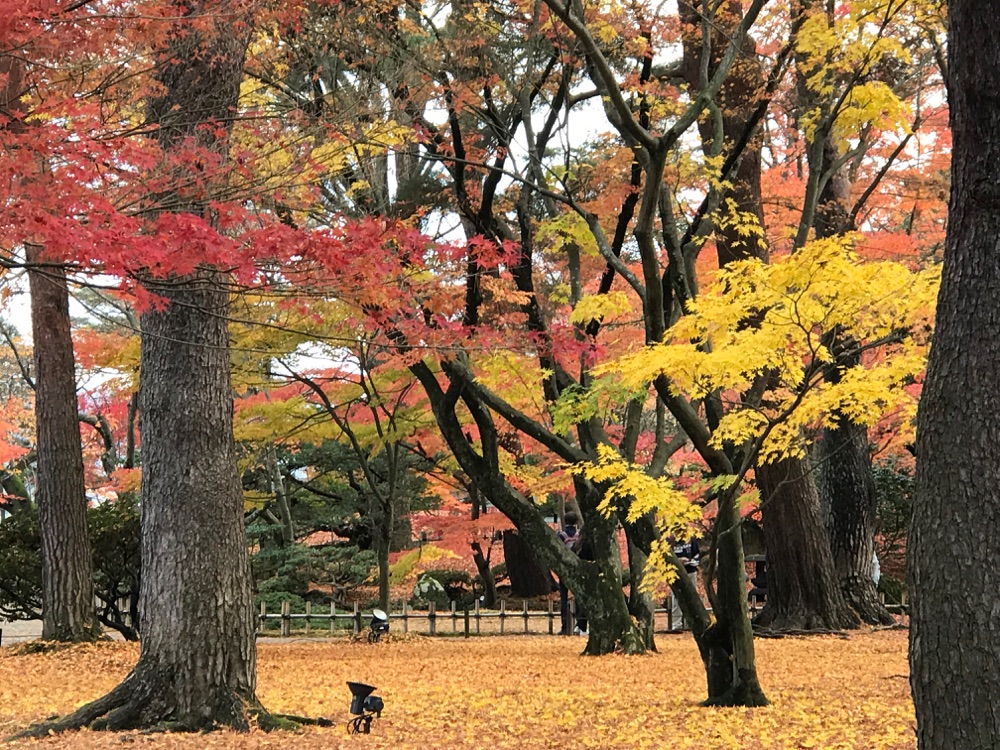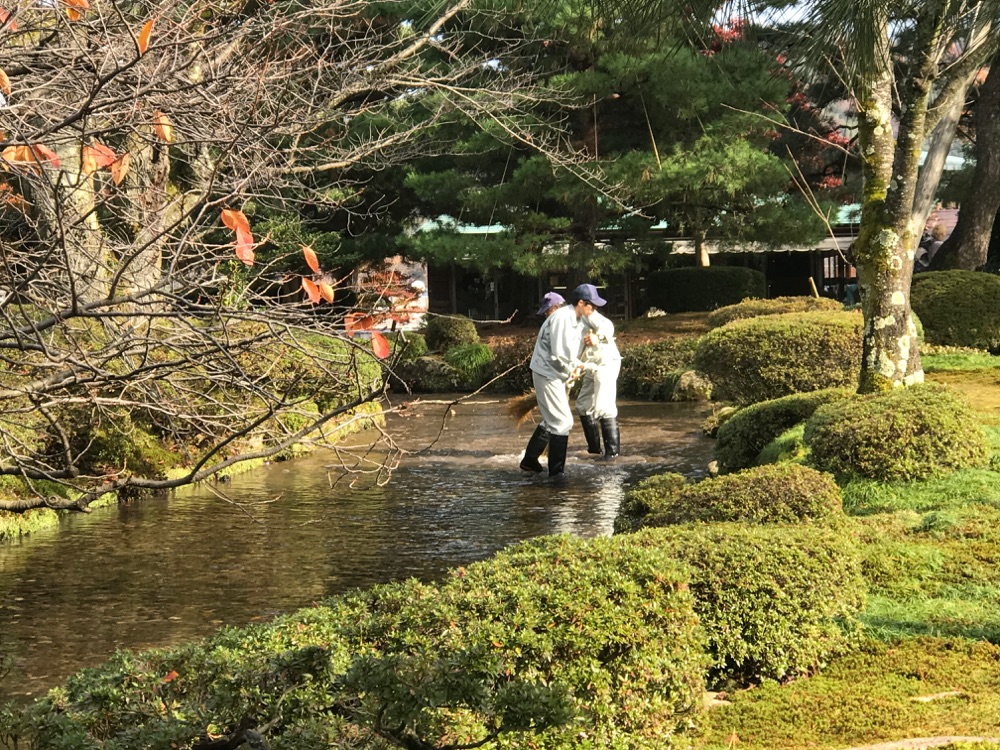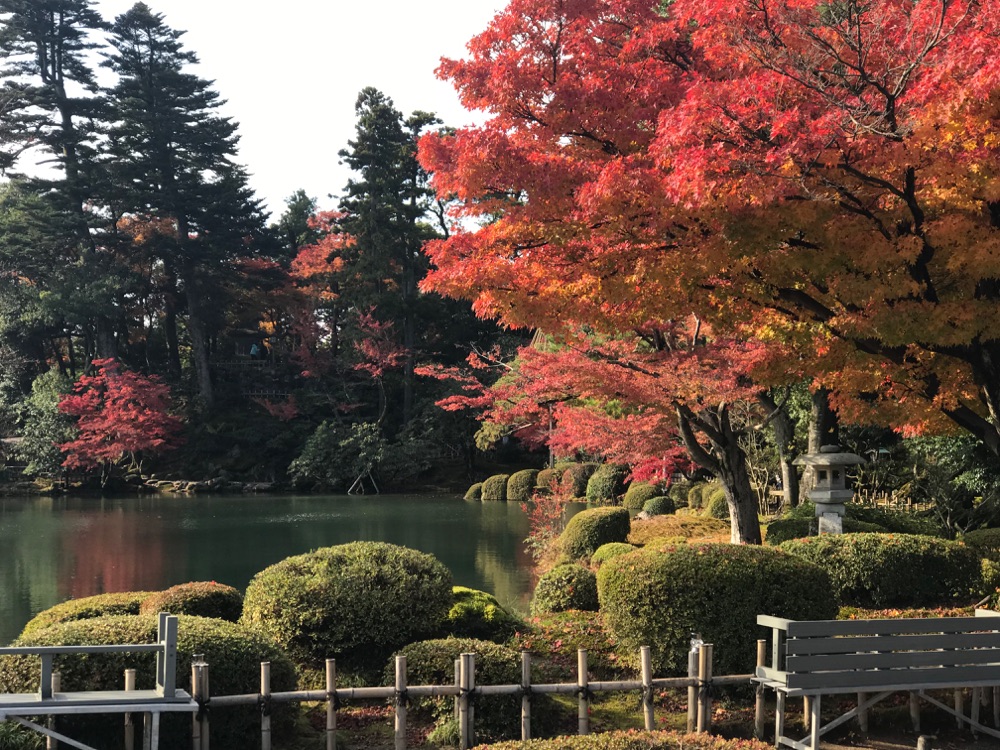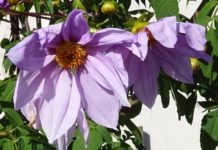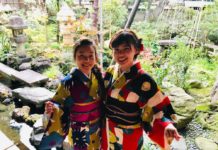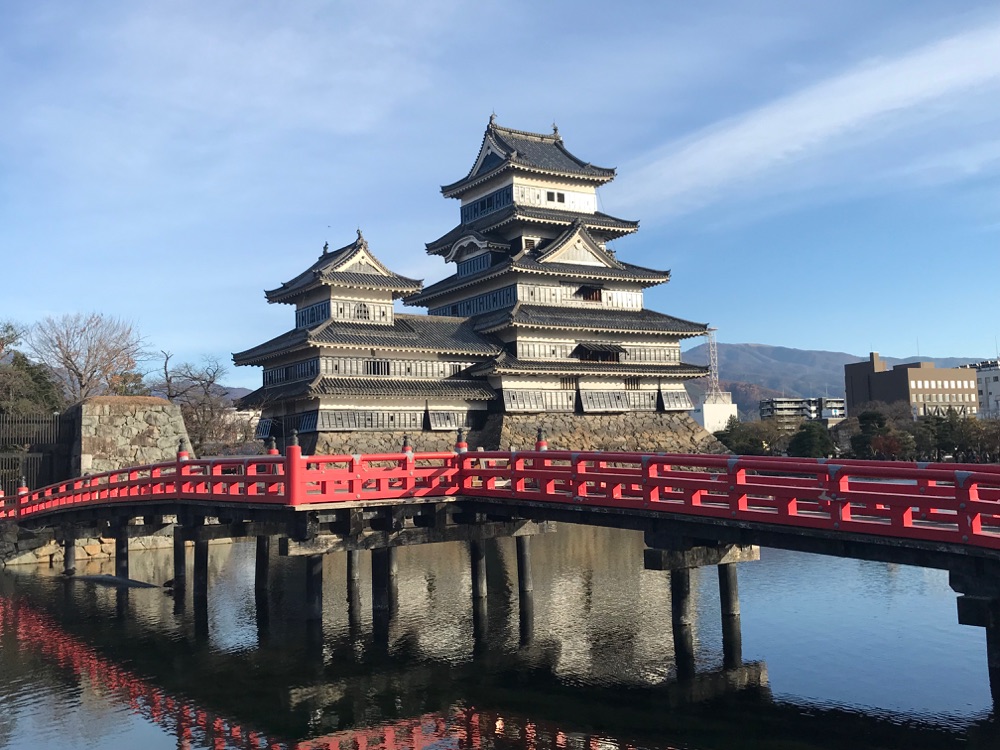
From Tokyo, we travelled by express train to Matsumoto, a city with views of the Japanese Alps, which were snow-capped and beautiful when we arrived.

Apparently, Nagano Prefecture, in which Matsumoto is located, is one of the most desirable parts of Japan to live, we were told, because of the quality of life and freedom from catastrophic weather as well as the closeness to all the mountain benefits of skiing and hot springs.
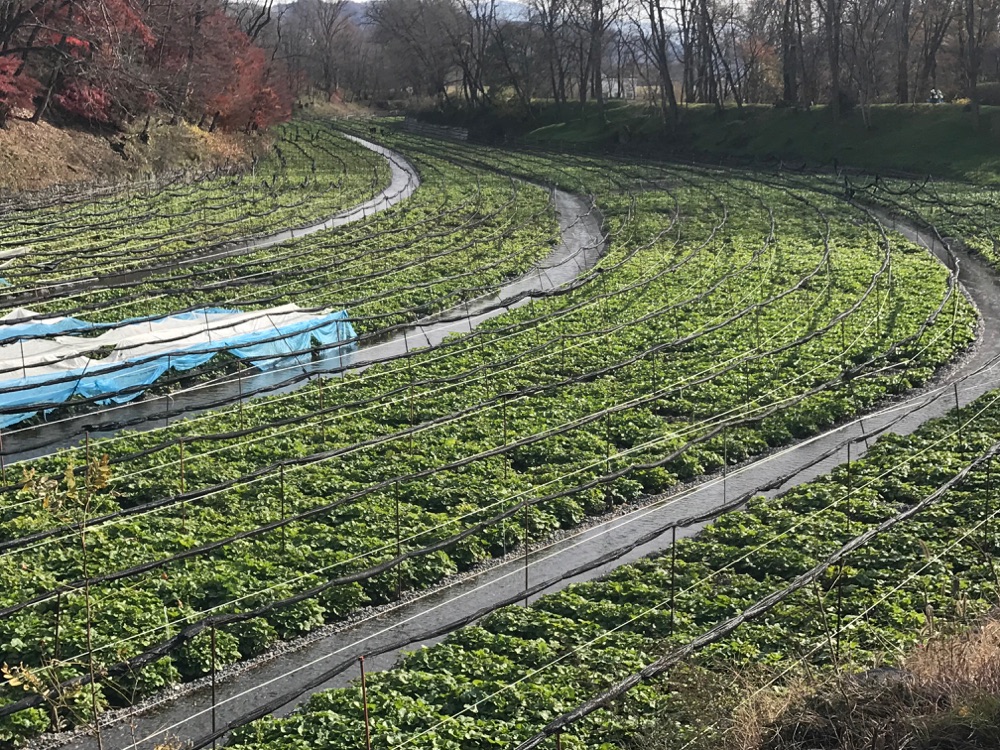
From Matsumoto station, we went for lunch to the Daio Wasabi Farm, one of the biggest wasabi farms in Japan.

Until this moment, all I have ever thought about wasabi was how the green equivalent of horseradish made eating sushi fun and never failed to bring tears to my eyes.
At the farm, we wandered into the large planted gravel beds of wasabi plants which require a cool, moist environment to grow to perfection.
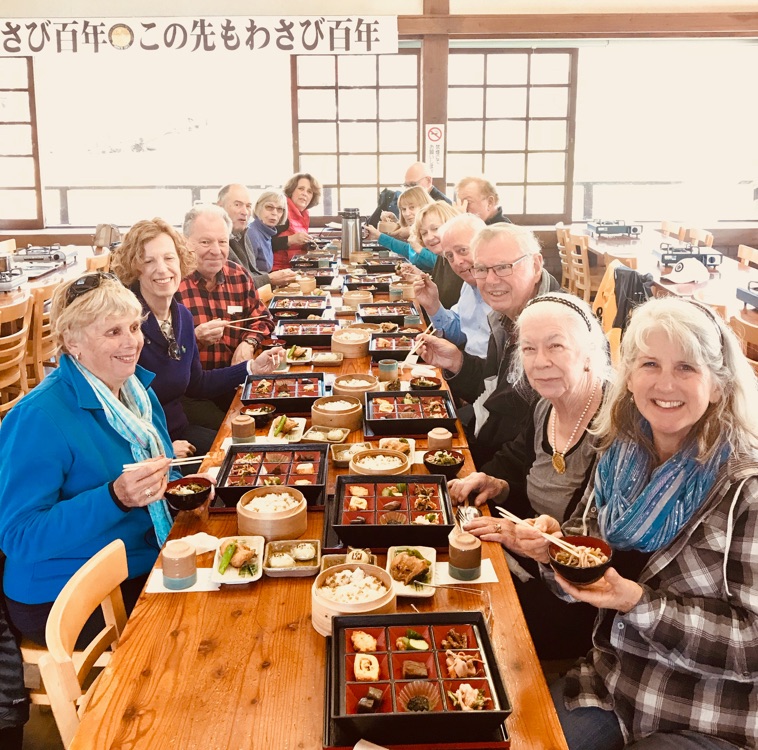
At Daio, the wasabi beds sweep along the course of the stream in long green lines. It is a striking sight.
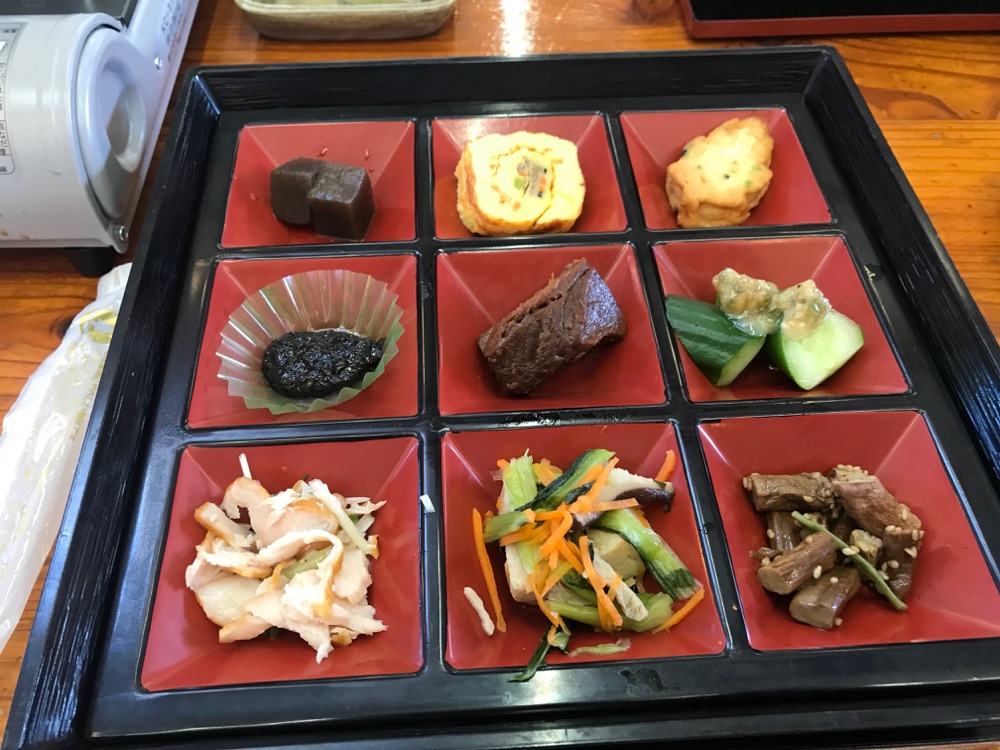
After learning a little more about the growing and harvesting of this universally popular condiment, we went for a lunch . . . consisting of all sorts of items flavoured with wasabi.
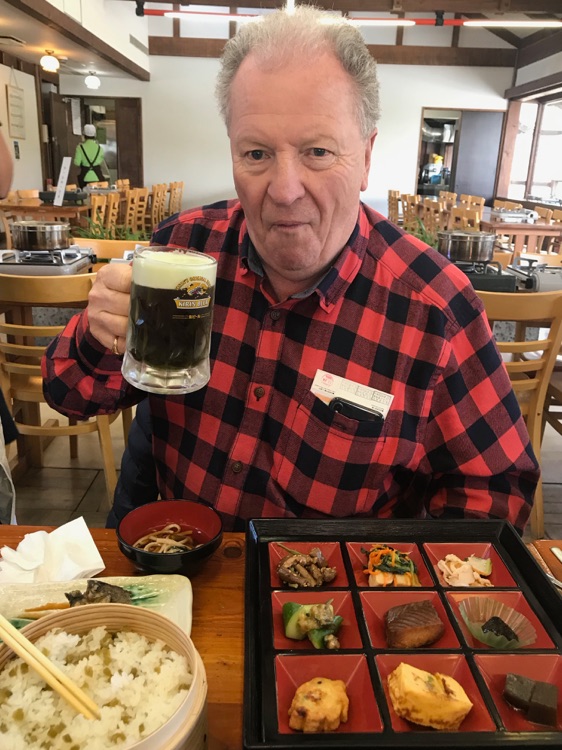
This included green wasabi beer, which tasted like very good Japanese beer, only with a green colour.
From the farm, we popped back into Matsumoto to visit the beautiful 16th century “castle” which is sometimes called the “crow castle” because of the black walls.

However, the castle is architectural poetry, a beautiful image with superb proportions and elegant on all sides.
An arching red bridge on one side adds to the attractiveness of the building and is reflected in the calm, still waters of the surrounding moat.
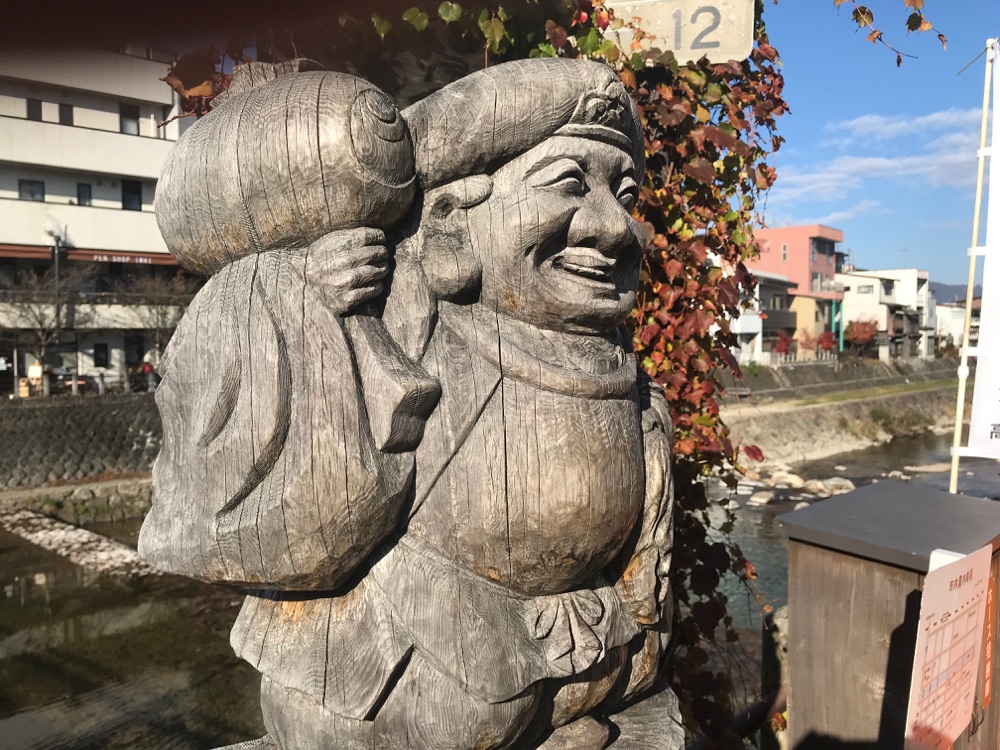
From Matsumoto, we next travelled through the long and winding roads and tunnels through the mountains to Takayama where we checked in to a traditional ryokan hot springs hotel where we were required to sleep on the floor on futons.
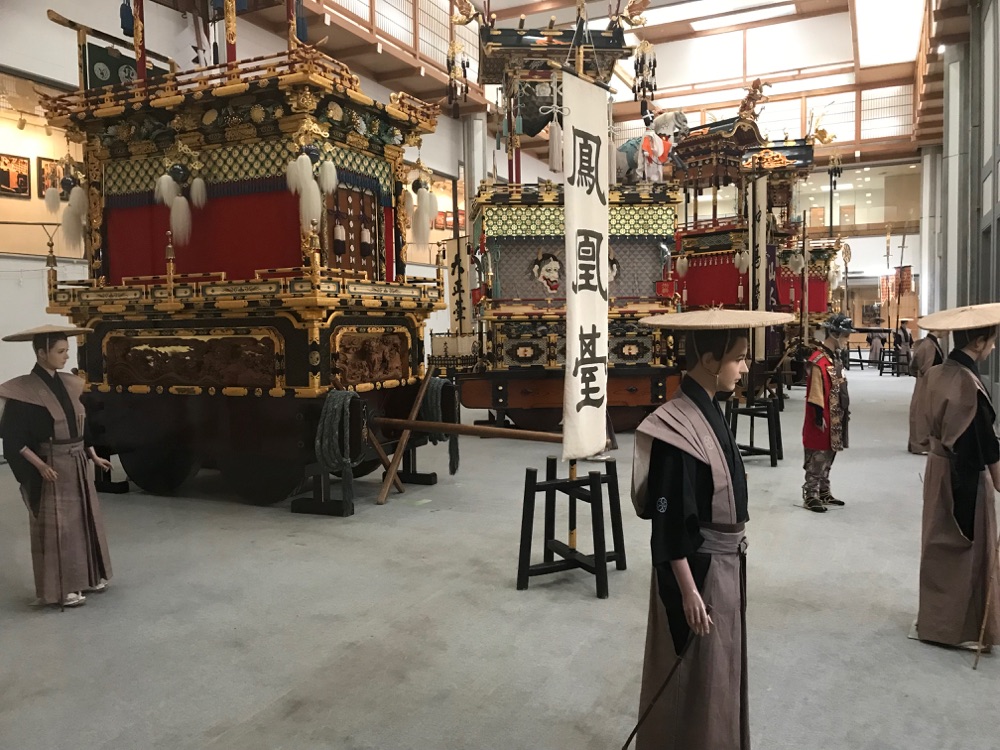
The next day, we wandered into Takayama, first to see the morning market, which consisted of dozens of stalls selling homemade crafts and homegrown produce, and then to see an exhibition of the famous floats that are used in seasonal festivals.

These floats are elaborately decorated and are paraded through the town, pulled by dozens of people to be admired by thousands in the crowds lining the town streets.

But the highlight of our time in Takayama was to walk the streets of the old town, dipping into stores and shops, and seeing the lovely old-style homes and low-buildings of the town.
We stopped at a couple of sake stores, including one that is a distillery and another that allows you to sample any number of sakes for the low fee of 300 yen. We, of course, did not hold back and had a fun time sampling as many sakes as we could and then buying our favourites.
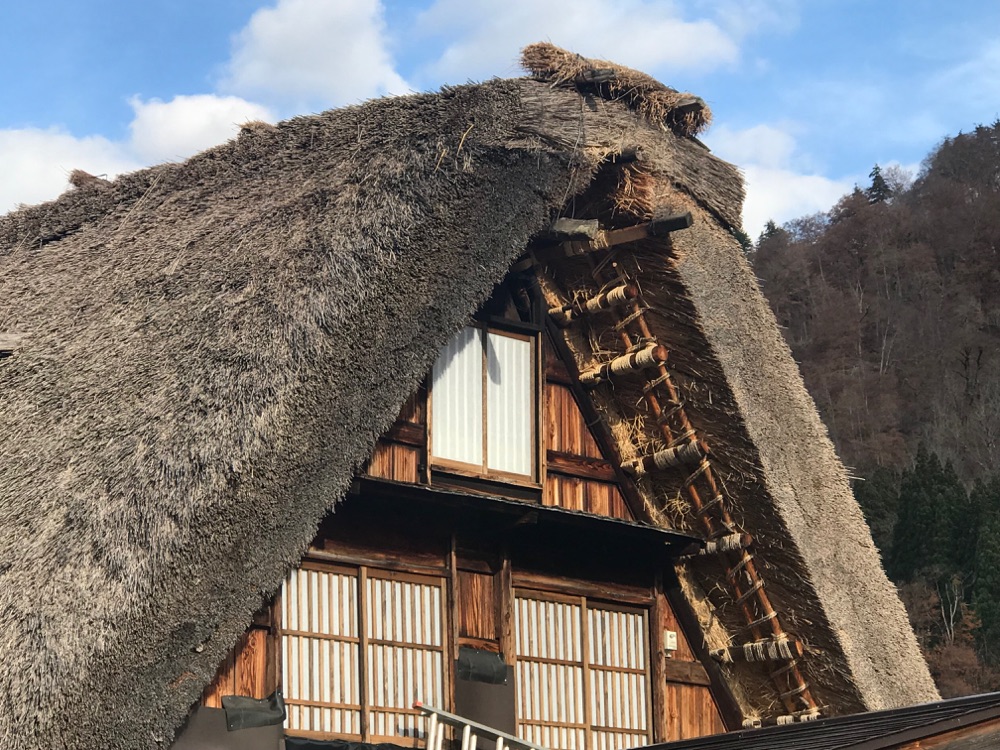
After lunch, we went to the Unesco world heritage site of Shirakawago, a mountain valley village, where the A-framed houses have spectacular thatched roofs. These houses are said to be in the shape of “praying hands” which is a more poetic description than A-frame.

When the snow falls – and apparently a lot does over winter – the village is turned into even more of a fairytale village but people who have stayed there during winter say it can also been dreadfully cold and not as pleasant to walk the streets.
From Shirakawago, we continued our journey through the mountain passes down to Kanazawa where we checked into our hotel before going for a classic Japanese meal at a local “party-style” restaurant.

The next morning, we headed first to the fish and vegetable market where we were able to see some amazing displays of various products from the sea, including hairy crab and king crab and all sorts of fish.
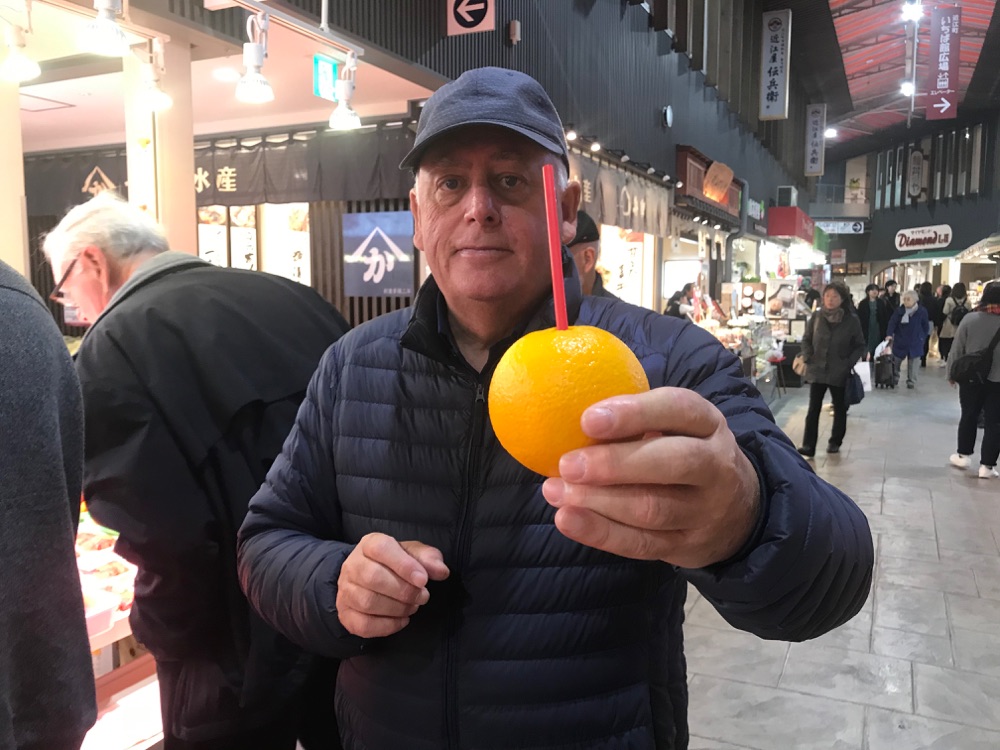
What was remarkable about this market was the quality of the displays. Each item was presented in a very artistic, simple, elegant way that made even non-fish fanciers take another look and wonder what it would taste like.

We did get to taste some of the fruit products. Oranges, for instance, were neatly bored and squeezed from the inside and then turned into a juice container with a straw. Very refreshing.
From the market, we went next to the Kenrokuen garden, one of the top three gardens in Japan, where we were delighted to find superb woodlands showing magnificent fall foliage colours.
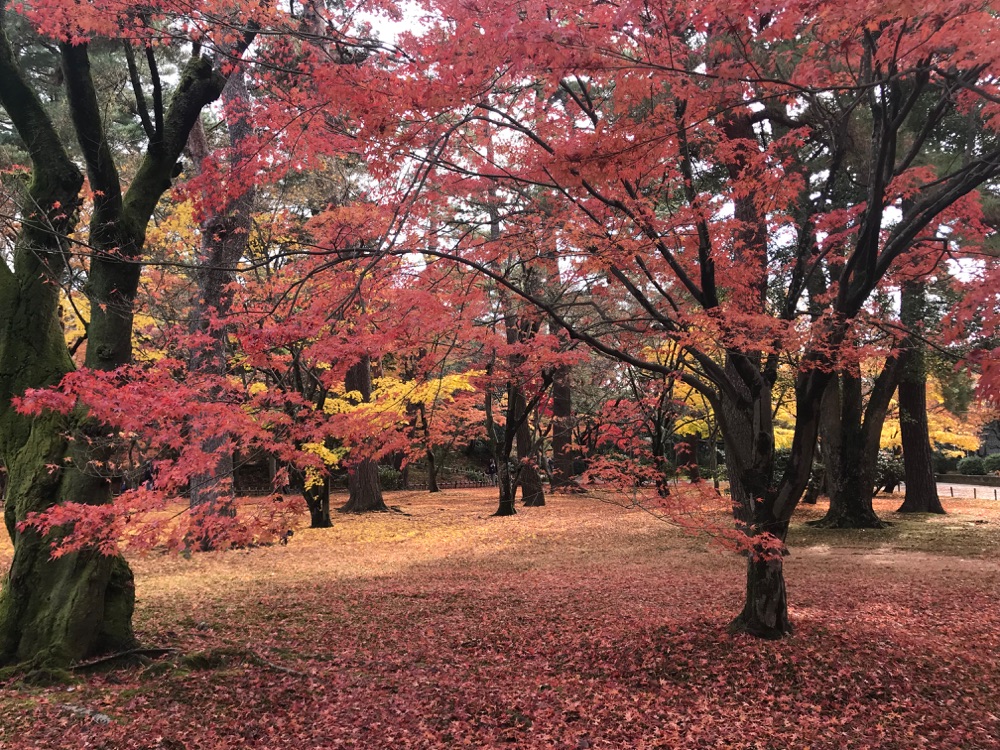
The colours – red, yellow, amber, orange, brown and tones of purple – were in the trees but also on the ground in the magical carpet of colour of the mixed fallen leaves.
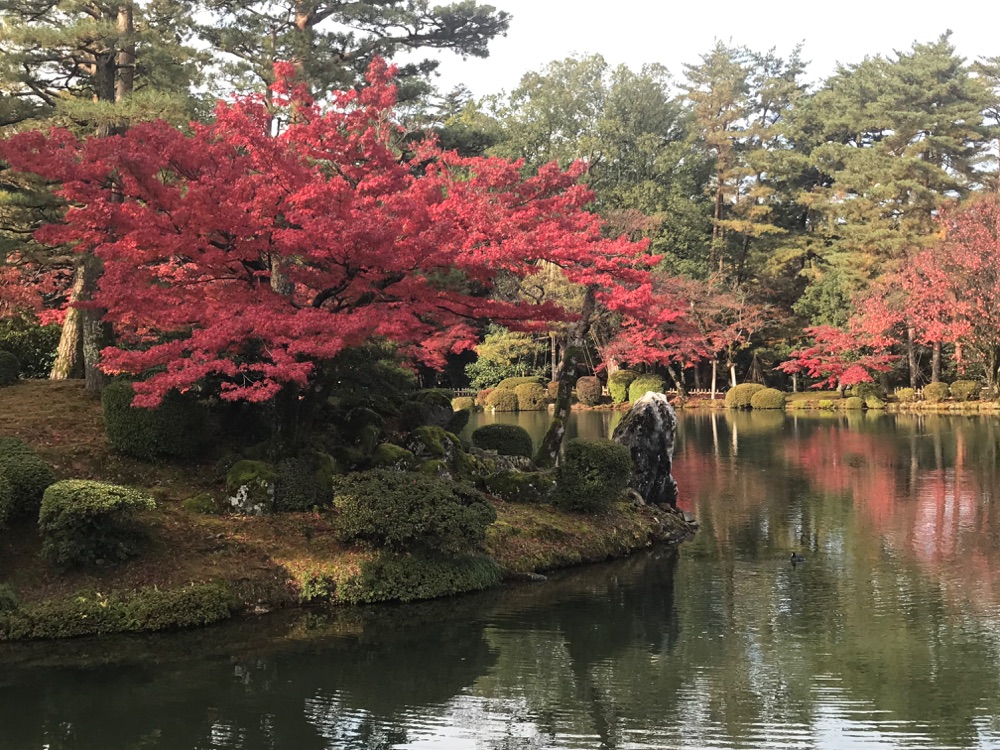
We walked the garden, taking in the beautiful lake views, and climbing up stone steps to reach a look-out pavilion where we enjoyed a glorious overview of the garden and the lake below.
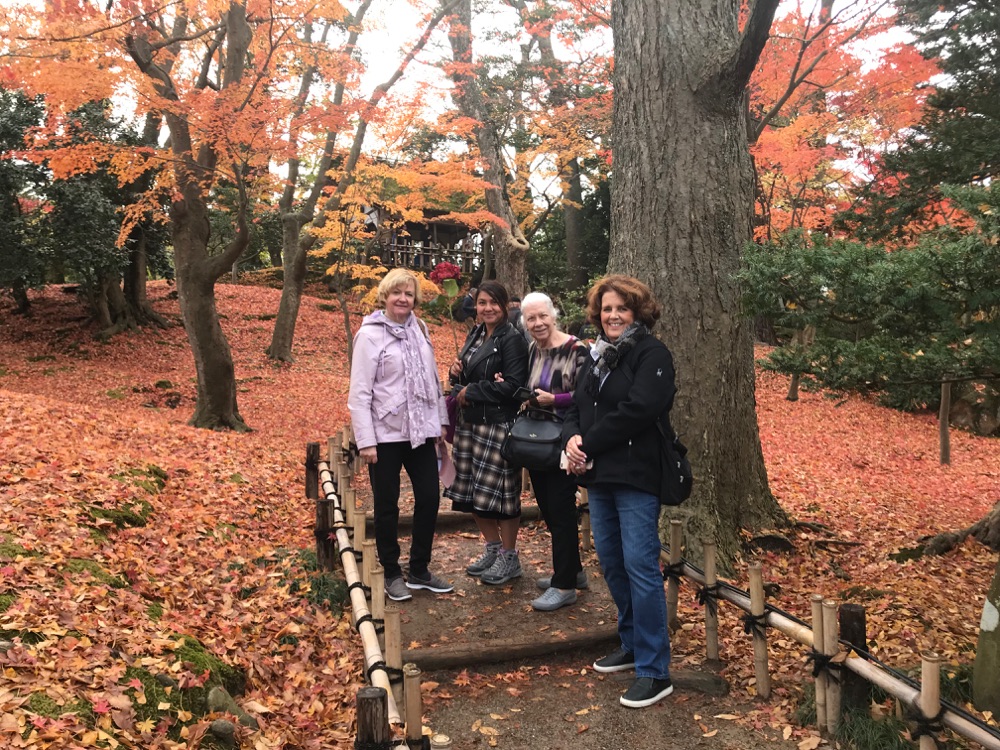
While in the garden, we noticed gardeners sweeping gravel paths and up to the knees in the water as they swept away leaves and debris from the bottom of the streams and ponds.

In another spot, we stopped to watch a group of volunteers on their knees, carefully and meticulously weeding a mossy bank. It was very impressive to see their arduous but enthusiastic work and that it was being done with such patience and passion.

Some of our group stopped to buy gold ice cream – vanilla ice cream with gold leaf over the top. Very unusual.
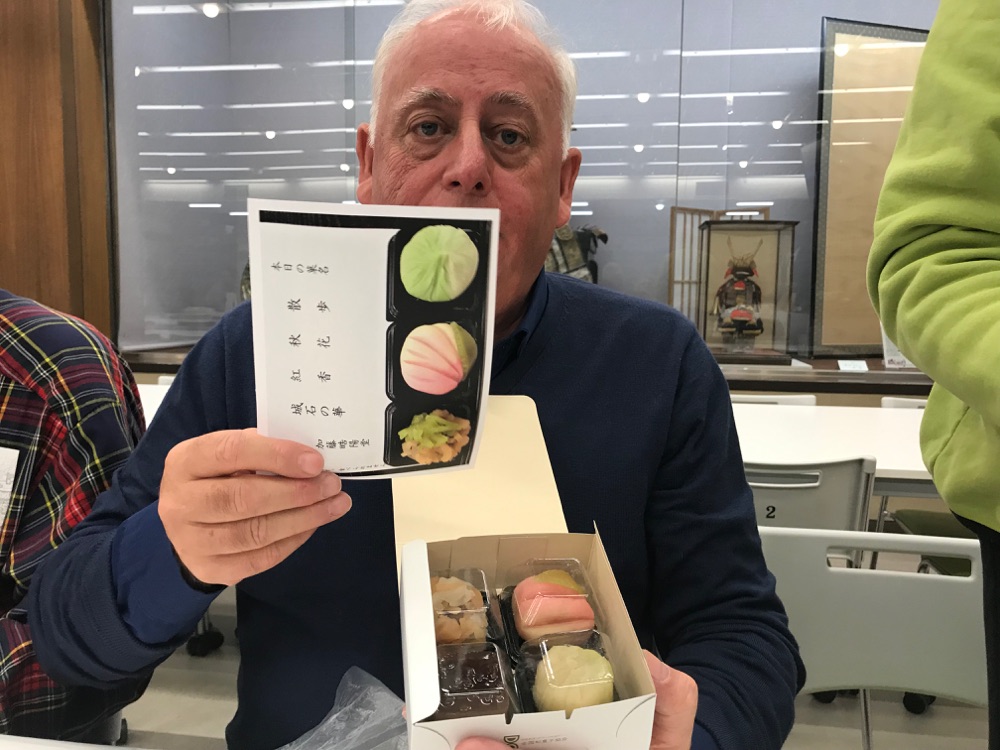
After lunch, we took a short sweet making course, learning how to fold and decorate traditional Japanese sweets. The teacher was very encouraging and liked our final products.
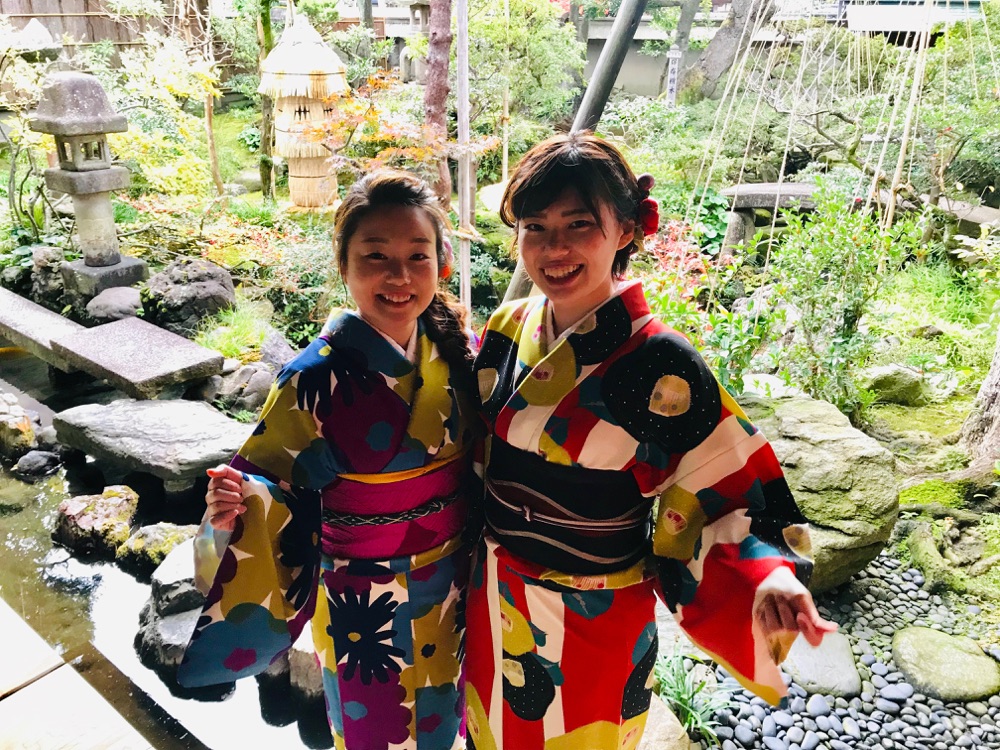
From the sweet making, we next visited the famous Nomura samurai house in a quaint residential area with beautiful homes and low walls.
The garden at the samurai house was a beautiful and artistic work with a clever design of elements – water, stone lanterns, koi pond and stream, stepping stone paths and immaculate courtyards where the trees and shrubs were already tied up with snow slings to protect them over winter.
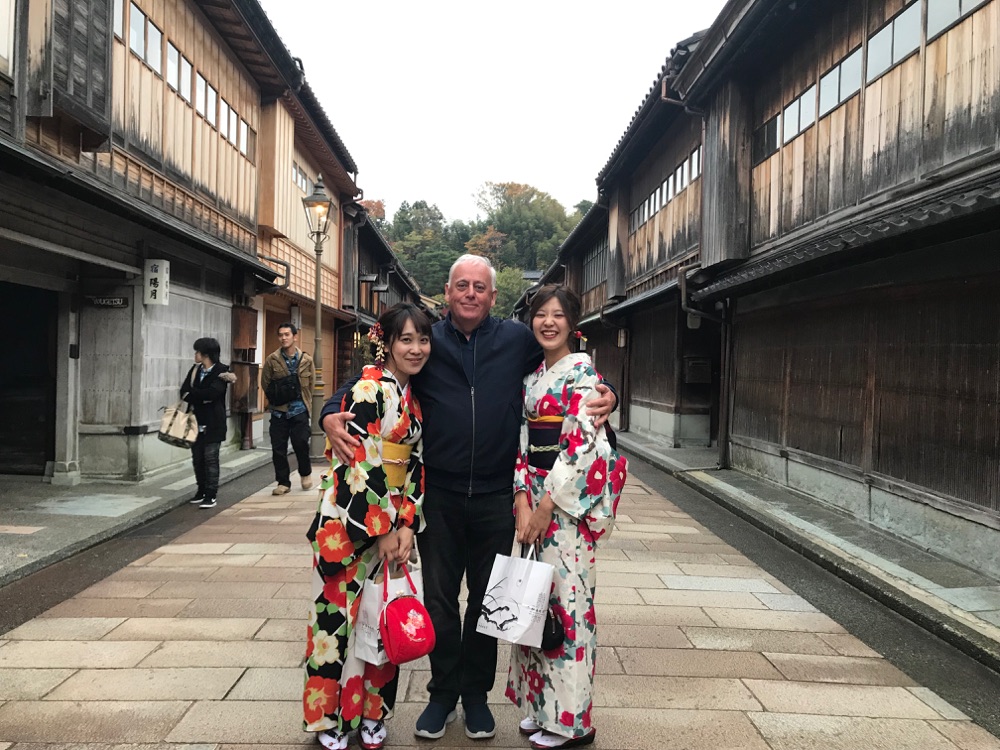
From the samurai house, we went into the geisha area for a wander and ponder. Very fascinating.
Our next stop is Hiroshima.
